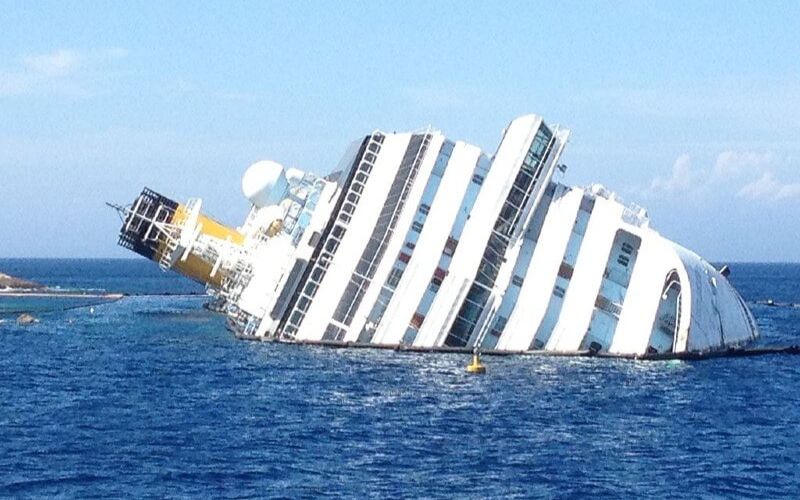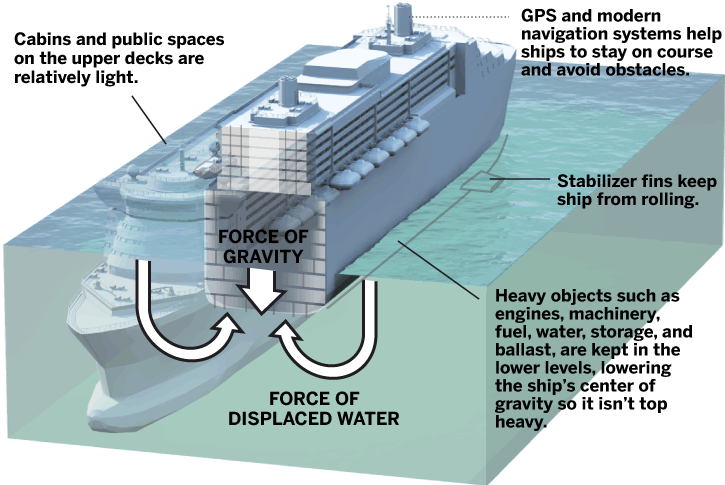Cruise ships are designed to not tip over due to the principle of buoyancy. This principle states that the mass of a ship is equal to the upward pressure of the water.
Quick Navigation
How likely is it for a cruise ship to tip over?

No, it is extremely unlikely that a cruise ship would tip over in a storm. The industry uses rigorous safety standards to ensure that ships are balanced to stay upright in even the roughest waters.
When you see a massive cruise ship gracefully sailing across the open sea, you might wonder how such a colossal vessel manages to stay balanced and not tip over. Rest assured, cruise ships are specifically designed to provide stability, even in the face of strong winds and rough waters.
The science behind the stability of cruise ships lies in their ingenious design and careful weight distribution.
Ship Design
The design of cruise ships incorporates several key features that enhance their stability:
Hull Shape
Cruise ships are built with a specially designed hull shape that helps in maintaining stability. The flat-bottomed sections of the hull called bilge keels act as stabilizers, reducing roll and enhancing the ship’s balance.
Bow Thrusters
These mechanisms, located in the front of the ship, provide lateral movement to counteract external forces such as wind or waves, helping maintain stability.
Weight Distribution
Another crucial aspect of cruise ship stability is the careful distribution of weight throughout the vessel:
Low Center of Gravity
Cruise ships are designed with a low center of gravity, which helps maintain balance. Heavy machinery, fuel tanks, and other weighty components are placed in the lower parts of the ship to achieve this.
Ballast Tanks
These tanks located at the bottom of the ship can be filled or emptied with water to adjust the center of gravity. They play a vital role in maintaining stability during different weather conditions.
Advanced Technologies
Cruise ship stability is further improved through the use of cutting-edge technologies:
Stabilizer Systems
Most modern cruise ships are equipped with advanced stabilizer systems. These movable fins or wings positioned under the ship help counteract the rolling motion caused by waves, reducing the ship’s inclination and enhancing stability.
Computerized Monitoring
Sophisticated computer systems continuously monitor the ship’s stability in real-time. These systems can make adjustments such as activating stabilizers or shifting ballast to maintain balance.

FAQ:
Why Do Cruise Ships Not Tip Over?
Cruise ships stay afloat due to their large and stable design, along with the principle of buoyancy. The ship’s weight is distributed evenly, preventing tipping over.
How Do Cruise Ships Maintain Stability?
Cruise ships maintain stability through various mechanisms, including ballast tanks, stabilizers, and a low center of gravity. These systems help counteract forces that may cause the ship to tip or roll.
What Is The Role Of Ballast Tanks In Cruise Ships?
Ballast tanks in cruise ships are used to control buoyancy and stability. By filling or emptying these tanks with water, the ship can adjust its weight distribution, ensuring balanced and safe sailing conditions.
Do Cruise Ships Have Stabilizers To Prevent Rolling?
Yes, cruise ships are equipped with stabilizers. These are fin-like structures that extend from the ship’s hull and work against the rolling motion caused by wave action. Stabilizers help passengers maintain comfort during the journey.
Conclusion
Cruise ships are marvels of engineering, designed to ensure a smooth and stable journey for passengers. Through careful ship design, weight distribution, and advanced technologies, these floating giants remain upright and steadfast, always defying the forces of nature.
So, the next time you embark on a cruise adventure, you can relax and enjoy knowing that tipping over is not something these ships are inclined to do.
Remember, stability is a top priority in the cruise ship industry, and their commitment to providing a safe and comfortable experience for passengers is unwavering.
